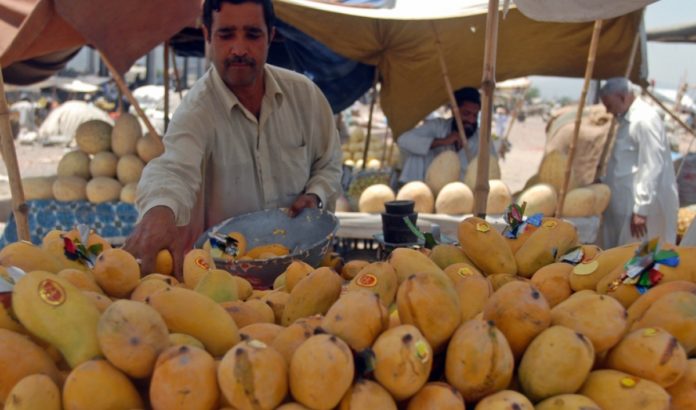Malik Mazhar Sandheela, owner of an orchard near River Chenab in Multan is eyeing a 100 percent increase in the income from his mango crop this year.
To him, adoption of new production and pest management techniques have led to a much-desired increase in the per hectare yield of the Chaunsa Mango, the prime variety of the fruit, liked equally in Pakistan and countries across continents.
He believes that proper pruning of the leafy canopy of the tree, efficient pest management and mechnaical harvesting of the mango fruit are paying the dividend to the mango growers in Southern Punjab. He has been supplying the fruit to pulp units for ultimate manufacturing of juices and other value-added products
But such farms are just islands of improved productivity amidst of a sea of farms still stuck to the traditional cultivation and harvesting practices that keep the mango yield low as compared to the other countries like Mexico, India and China.
India with a production of 15 million tons tops the table of mango producing countries, followed by China with 4.3 million, Thailand with 2.6 million, Indonesia with 2.1 million and Pakistan with 1.9 million.
About 80 percent of the total world mango production is contributed by 10 countries.
Horticulture experts believe that the development of the dwarf varieties of the mango fruit and the adoption of Good Agricultural Practices can help lift production and even exports from Pakistan, which form only 5 percent of the total production.
Pakistan is home to more than two dozen varieties of mangoes. But Sindhri, Langra, Chaunsa, Fajri, Samar Bahisht, Anwar Ratole, Dusehri, Saroli, Tota Pari, Neelam and Maldah are main varieties grown in the country.
Among these Chaunsa with peculiar aroma and taste is the leading variety, relished a lot at home and abroad.
About 85% of Pakistani mangoes are shipped to Dubai. The rest are exported to around 25-30 countries in various parts of the world with prominent destinations including Saudi Arabia, the U.K., Bahrain and Singapore.
The United States, which attracts about 43 percent of the total mango exports of the world, has so far not been a formal destination of Pakistani mangoes.
Only consignment-based exports are being made to America and some European countries.
Non-compliance to the Phyto Sanitary conditions is the major hurdle in Pakistani exports to the high-end and quality conscious markets.
In the first month of the 2016 season, Pakistan achieved a 16 percent jump in mango exports.
However, Pakistan can quickly expand its export of the king of fruits if it takes some basic steps to improve treatment facilities and supplies.
One can still find wooden crates in Multan and Mirpur Khas being used for packing of the mangoes despite the fact these have become obsolete. Now it is the corrugated board boxes that are used for the packing of this delicious fruit. The issue of fruit fly is also hampering the exports. This issue can be resolved by Hot Water Treatment Plant and the irradiation facilities across the country. At the moment, only a couple of hot water treatment plants are working in Lahore and Karachi while only one food irradiation plant is operational in Lahore with much less capacity to handle the mango export consignments.
There is also the need to diversify the geographical destinations of Pakistani mangoes by focusing more on Malaysia, Hong Kong and Singapore in the Far East and the Netherlands, France, the U.K. and Germany in Europe. The non-existence of enough processing facilities like pulp and dehydration units lead to consumption of the fruit in just the time window that spans just 3 months, leaving rest of the nine months of the year mangoless.
That is why most of the mango is consumed as table fruit or in a variety of desserts. The processing plants use less than 10 percent of the total production for preparation of juices, jams, jellies, nectar as well as crisp mango chips, which are eaten as snacks.
The technological interventions across supply chain of the mangoes in Pakistan, can help make mangoes an important source of foreign exchange earning.















